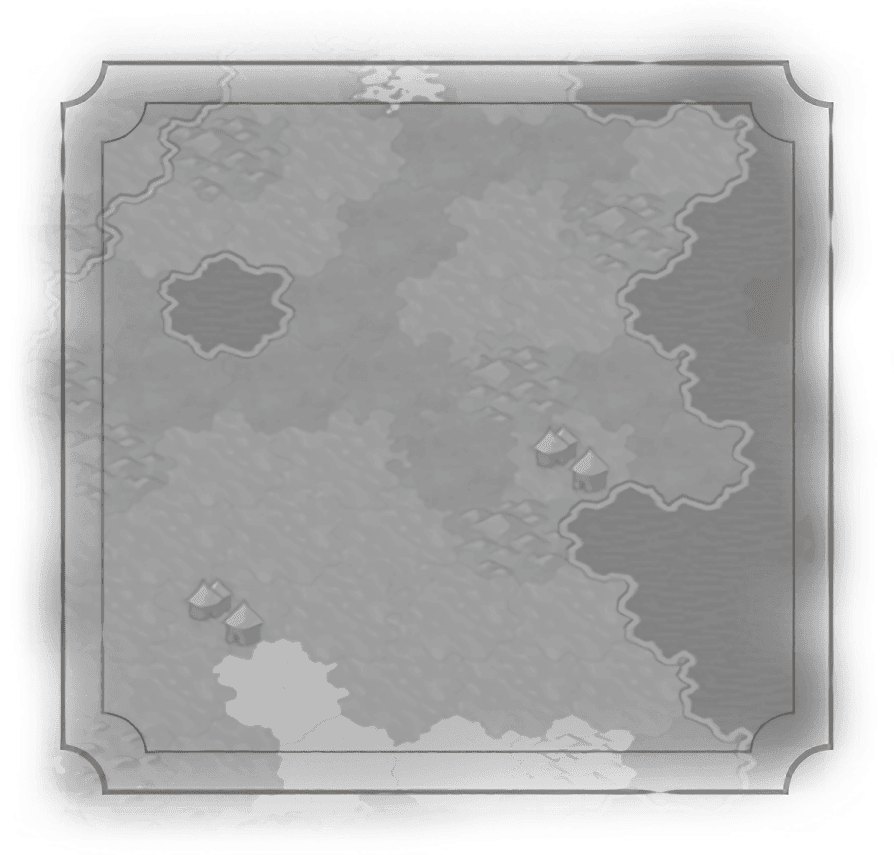

Anshan
Unique Ability
Scientific City-State
1  Envoy: +2
Envoy: +2  Science in your
Science in your  Capital.
Capital.
3  Envoys: +2
Envoys: +2  Science in every Library building.
Science in every Library building.
6  Envoys: +2
Envoys: +2  Science in every University building.
Science in every University building.
Anshan Suzerain Bonus
+2  Science from each
Science from each  Great Work of Writing. +1
Great Work of Writing. +1  Science from each
Science from each  Relic and
Relic and  Artifact.
Artifact.
Historical Context
Elamite art involved combinations of human and animal forms in ways that could be strikingly sensitive and beautiful. For instance, the proto-Elamite “Kneeling Bull with Vessel,” now at New York’s Metropolitan Museum of Art, is a silver sculpture of a soft, fleshy human form with a bull’s head and hooves holding up a cup. It is at once feminine and masculine, animal and human. In contrast to “Kneeling Bull,” the “Guennol Lioness” limestone sculpture is a powerful muscled, androgynous human form with claws, tail, and a lioness’s head – radiating power but at the same time androgynous. Elamite seals – round cylinders that made an image when rolled into wet clay – were particularly elaborate and, while statues and other images may have had religious significance, seals were used for personal identification in trade.
Civilizations rise and fall, but Anshan remained significant. In 2700 BC, Anshan was conquered by the Sumerians for a time, and at other times falling under the sway of nearby groups from what is now Iran, but it was not to fall for long. Over a thousand years later, in 1500, Anshan was to be the center of a new empire, one that fought against Babylon and even plundered the great city, carrying back the statue of the Babylonian god-king Marduk as a trophy. Elamite dominance was not to last, however, and the city began to decline in the 500s BC. The Biblical prophet Ezekiel describes Elam in decline in this way:
“There is Elam and all her multitude, All around her grave, All of them slain, fallen by the sword, Who have gone down uncircumcised to the lower parts of the earth, Who caused their terror in the land of the living; Now they bear their shame with those who go down to the Pit” (Ezekiel 32:24).
Over time, Persians moved into Anshan, changing the character of the region and revitalizing the city. For a time, Anshan became the capital of Persia, and the legendary Cyrus the Great was born there. Although we may think of Cyrus as hailing from distant antiquity – he ruled in the 550s BC, after all, he was born into a city that was already 2,500 years old. That is to say, Anshan was as old when Cyrus ruled there as Cyrus would be today. Were he alive. Which he is not.
Persian attention moved elsewhere, however, and as the Empire built a new capital at Persepolis, Anshan became just another village. And then, a ruin.
Civilizations rise and fall, but Anshan remained significant. In 2700 BC, Anshan was conquered by the Sumerians for a time, and at other times falling under the sway of nearby groups from what is now Iran, but it was not to fall for long. Over a thousand years later, in 1500, Anshan was to be the center of a new empire, one that fought against Babylon and even plundered the great city, carrying back the statue of the Babylonian god-king Marduk as a trophy. Elamite dominance was not to last, however, and the city began to decline in the 500s BC. The Biblical prophet Ezekiel describes Elam in decline in this way:
“There is Elam and all her multitude, All around her grave, All of them slain, fallen by the sword, Who have gone down uncircumcised to the lower parts of the earth, Who caused their terror in the land of the living; Now they bear their shame with those who go down to the Pit” (Ezekiel 32:24).
Over time, Persians moved into Anshan, changing the character of the region and revitalizing the city. For a time, Anshan became the capital of Persia, and the legendary Cyrus the Great was born there. Although we may think of Cyrus as hailing from distant antiquity – he ruled in the 550s BC, after all, he was born into a city that was already 2,500 years old. That is to say, Anshan was as old when Cyrus ruled there as Cyrus would be today. Were he alive. Which he is not.
Persian attention moved elsewhere, however, and as the Empire built a new capital at Persepolis, Anshan became just another village. And then, a ruin.

City-State Type
Scientific

City-State Type
Scientific
Unique Ability
Scientific City-State
1  Envoy: +2
Envoy: +2  Science in your
Science in your  Capital.
Capital.
3  Envoys: +2
Envoys: +2  Science in every Library building.
Science in every Library building.
6  Envoys: +2
Envoys: +2  Science in every University building.
Science in every University building.
Anshan Suzerain Bonus
+2  Science from each
Science from each  Great Work of Writing. +1
Great Work of Writing. +1  Science from each
Science from each  Relic and
Relic and  Artifact.
Artifact.
Historical Context
Elamite art involved combinations of human and animal forms in ways that could be strikingly sensitive and beautiful. For instance, the proto-Elamite “Kneeling Bull with Vessel,” now at New York’s Metropolitan Museum of Art, is a silver sculpture of a soft, fleshy human form with a bull’s head and hooves holding up a cup. It is at once feminine and masculine, animal and human. In contrast to “Kneeling Bull,” the “Guennol Lioness” limestone sculpture is a powerful muscled, androgynous human form with claws, tail, and a lioness’s head – radiating power but at the same time androgynous. Elamite seals – round cylinders that made an image when rolled into wet clay – were particularly elaborate and, while statues and other images may have had religious significance, seals were used for personal identification in trade.
Civilizations rise and fall, but Anshan remained significant. In 2700 BC, Anshan was conquered by the Sumerians for a time, and at other times falling under the sway of nearby groups from what is now Iran, but it was not to fall for long. Over a thousand years later, in 1500, Anshan was to be the center of a new empire, one that fought against Babylon and even plundered the great city, carrying back the statue of the Babylonian god-king Marduk as a trophy. Elamite dominance was not to last, however, and the city began to decline in the 500s BC. The Biblical prophet Ezekiel describes Elam in decline in this way:
“There is Elam and all her multitude, All around her grave, All of them slain, fallen by the sword, Who have gone down uncircumcised to the lower parts of the earth, Who caused their terror in the land of the living; Now they bear their shame with those who go down to the Pit” (Ezekiel 32:24).
Over time, Persians moved into Anshan, changing the character of the region and revitalizing the city. For a time, Anshan became the capital of Persia, and the legendary Cyrus the Great was born there. Although we may think of Cyrus as hailing from distant antiquity – he ruled in the 550s BC, after all, he was born into a city that was already 2,500 years old. That is to say, Anshan was as old when Cyrus ruled there as Cyrus would be today. Were he alive. Which he is not.
Persian attention moved elsewhere, however, and as the Empire built a new capital at Persepolis, Anshan became just another village. And then, a ruin.
Civilizations rise and fall, but Anshan remained significant. In 2700 BC, Anshan was conquered by the Sumerians for a time, and at other times falling under the sway of nearby groups from what is now Iran, but it was not to fall for long. Over a thousand years later, in 1500, Anshan was to be the center of a new empire, one that fought against Babylon and even plundered the great city, carrying back the statue of the Babylonian god-king Marduk as a trophy. Elamite dominance was not to last, however, and the city began to decline in the 500s BC. The Biblical prophet Ezekiel describes Elam in decline in this way:
“There is Elam and all her multitude, All around her grave, All of them slain, fallen by the sword, Who have gone down uncircumcised to the lower parts of the earth, Who caused their terror in the land of the living; Now they bear their shame with those who go down to the Pit” (Ezekiel 32:24).
Over time, Persians moved into Anshan, changing the character of the region and revitalizing the city. For a time, Anshan became the capital of Persia, and the legendary Cyrus the Great was born there. Although we may think of Cyrus as hailing from distant antiquity – he ruled in the 550s BC, after all, he was born into a city that was already 2,500 years old. That is to say, Anshan was as old when Cyrus ruled there as Cyrus would be today. Were he alive. Which he is not.
Persian attention moved elsewhere, however, and as the Empire built a new capital at Persepolis, Anshan became just another village. And then, a ruin.



